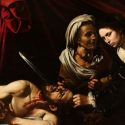Pablo Picasso’s Blue and Rose Periods
In general, it is often said that art embodies every emotion you feel and expresses it through millions of hues and a blank canvas. We can say that this metaphor becomes a reality when it comes to Pablo Picasso, one of the greatest artists of all time.
Pablo Picasso is such a familiar name for every art lover; If one is not aware of its artistic significance, it is insulting to art itself. Pablo Picasso created a completely different era in art history. During his time in France, he mastered not only portraits and painting but also ceramics and sculptures.
He created thousands of paintings and brought a different style to the entire art culture with the phases it brought with it. From revealing surrealism and portraits to giving birth to the art of cubism, Pablo Picasso contributed much to the art of the 20th century and has earned a place in the hearts of one of the greatest artists of all time.
Out of all the phases he brought along, two of them that occurred simultaneously and also quite oppositely, were the blue and rose periods.
Now, we will give details about the Blue and Rose Periods, which are the special periods of Pablo Picasso. Knowing these periods will allow us to gain an even deeper insight into the life of Pablo Picasso.
Picasso’s Blue and Rose Periods

Pablo Picasso (25 October 1881 – 8 April 1973) | Pablo Picasso’s Blue and Rose Periods
Picasso’s Blue Period
How does sadness affect an artist and how does the artist reflect this feeling in his/her artworks?
Pablo Picasso transferred this feeling to painting with his works that it called the blue period.
The starting point of this period is uncertain. It may have started in Spain in the spring of 1901 or in Paris in the second half of the year. The main subject of Picasso’s period, which covers the years 1901-1904, which is called ‘Blue’, is the sad images of the poor and the deprived. Some of the drawings and oil paintings in question were made in Paris, but much more in Barcelona, where the techniques and themes of the turn of the century and the symbolic and sad atmosphere are still dominant.
During this period, all his works were dominated by the color blue, and all his paintings had predominantly blue and green tones. In this period, he rarely used a different color on his canvas.
Picasso, who lost a very close friend named Carlos Casagemas to suicide, experienced great sadness. During this painful period, he created his famous La Vie in 1903.

Young painter Carles Casagemas, who committed suicide at the age of 21 and whose death affected Pablo Picasso’s life | Pablo Picasso’s Blue Period
La Vie depicted his friend’s inner sadness personified in a way that wanted to kill the person insanely and blindly in love with a failed relationship.
Time has also influenced him in terms of poverty. During this time, he not only suffered himself but also witnessed the painful ways others tried to make a living.
He produced paintings depicting poverty, prostitution, labor exploitation, and all social problems of that period in shades of blue.

The Tragedy, 1903 by Pablo Picasso | Picasso’s Blue Period | Picasso’s Blue and Rose Periods

The Soup, 1902 by Pablo Picasso | Picasso’s Blue Period | Picasso’s Blue and Rose Periods

The Guitarist, 1903 by Pablo Picasso | Picasso’s Blue Period

Old Beggar with a Boy, 1903 by Pablo Picasso | Picasso’s Blue Period
Recommended For You- 8 Things You Need To Know About Picasso’s Guernica
Picasso’s Rose Period
Although the blue period cannot be determined with a definite line, it can be said that it ended in 1904, and then Picasso’s rose period began.
Picasso’s artworks changed from a gloomy atmosphere to a more cheerful and happy atmosphere during the rose period.
During these few years, he was content with Picasso’s relationship with Fernande Olivier, whom he met in 1904, and this has been cited as one of the possible reasons why he changed his painting style.
It is also a period in which Picasso was influenced, settled, and lived among bohemian poets and writers, who helped him change his perspective and understand the world. During this period, he was greatly inspired by and influenced by the writers, and thus a new era began in his life.
While Pablo Picasso’s Blue Period is much more popular today, the Rose Period is of greater significance to art history. During the Rose Period, Pablo Picasso would – for the first time in his career – become part of the Picasso Style and develop stylistic tools that made him the most important artist of the 20th century.
Pablo Picasso saw life on the bright side in the Rose period and painted lighter colors, dominated by red and pink.
He transferred the depictions of clowns, artists in carnivals, stages, and circus performances to his paintings.

Acrobat and Young Harlequin, 1905 by Pablo Picasso | Picasso’s Rose Period
Picasso’s rose period consists of the fluency of the line he began to achieve in 1904. While Family of Acrobats with Monkey (1905) is quite classical, its line is as thought-provoking as Picasso’s later, more abstract artwork.

Family of Acrobats with Monkey, 1905 by Pablo Picasso | Picasso’s Rose Period
This fine line is Picasso’s unique contribution to expressionism. In general, it can be said that there is a trade-off between subtlety and expressiveness, and the immediacy of expressionism seems vulgar to the classicist. Throughout his career, Picasso would continue to explore how to combine expressionism with classicism, a process he laid the foundations for in the Rose Period.
In 1905, at the age of 24, Pablo Picasso painted Boy with a Pipe, shortly after settling in Montmartre, France. It is an oil-on-canvas painting depicting a local boy who regularly visits Picasso’s Montmartre workshop, holding a pipe in his left hand and wearing a wreath of flowers.

Boy with a Pipe, 1905 by Pablo Picasso | Picasso’s Rose Period | Picasso’s Blue and Rose Periods
The Rose Period marks the end of a development in which Picasso found his style as a figurative painter.
The years he spent in Paris caused him to absorb French culture, where the seriousness of the Blue Period was replaced by Parisian elegance.

Girl in a Chemise, 1905 by Pablo Picasso | Picasso’s Rose Period | Picasso’s Blue and Rose Periods

Mother and Child, 1904-05 by Pablo Picasso | Picasso’s Rose Period
The Rose period lasted from 1904 to 1906.
This period mainly showed the rise of Pablo Picasso in his new style and how he experimented with primitivism.
In addition, he began to be deeply interested in African art in this period, and this interest formed the first stage of bringing a new style to his art in the following period.
References:
- https://www.radartmedia.com/post/all-you-need-to-know-about-picasso-s-blue-and-rose-periods
- https://seyler.eksisozluk.com/olumuyle-insanliga-cok-sey-katan-genc-ressam-carles-casagemas
- https://dergipark.org.tr/tr/download/article-file/751778
- https://sakipsabancimuzesi.org/tr/donem/mavi-ve-pembe-donemler
- https://www.pablopicasso.org/rose-period.jsp
- https://www.pablopicasso.org/blue-period.jsp








